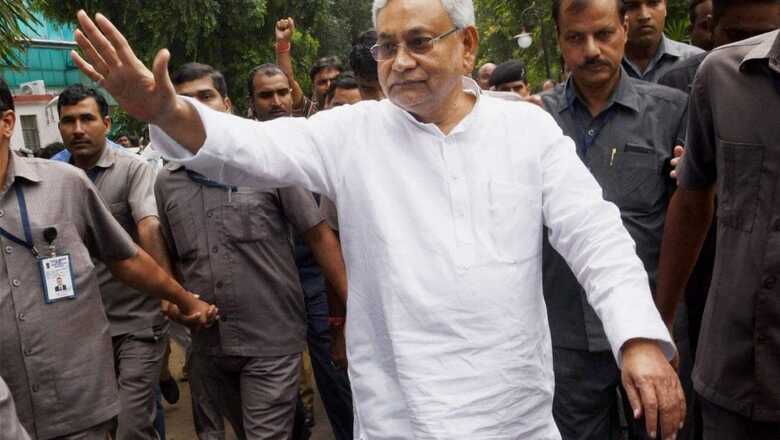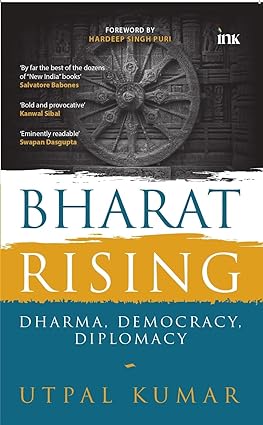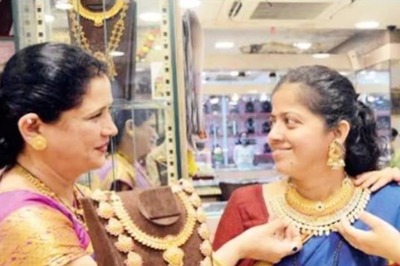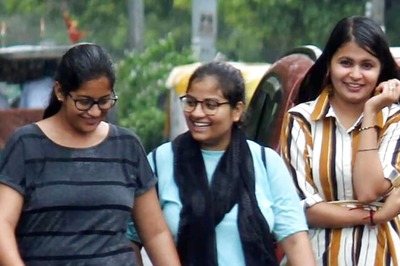
views
In 1991, American economist Robert Reich wrote an article highlighting the growing social divide in the US. He called it the “secession of the successful”. A year later, he expanded the idea into a book, The Work of Nations, wherein he wrote how the “new elite is linked by jet, modem, fax, satellite and fibre-optic cable to the great commercial and recreational centres of the world, but it is not particularly connected to the rest of the nation”.
These ‘successful’ ones tend to ‘secede’ from society as they get richer and more successful. They tend to retreat into a reclusive, private world. Former diplomat and writer Pavan K. Varma highlights this “aggressive, selfish, insular” lifestyle of the Indian elite in his book, The Great Indian Middle Class, where he points out how they live in their bungalows surrounded by high walls, with secured water from personal borewells and electricity from diesel-powered gensets. When they need to socialise, they go to private clubs, use private transport, and have for all practical purposes cut themselves off from the larger Indian realities. They have not just seceded from their surroundings but are also eager to migrate abroad. The most popular alternative homes of Indian business families outside India can be found in the UK, Singapore, Dubai, and Switzerland.
The traditional Lutyens’ elites owe their existence and sustenance largely to the Nehru–Gandhi family that has been in power, directly or indirectly, till 2014. In fact, as author-journalist Sanjaya Baru writes in India’s Power Elite: Class, Caste and a Cultural Revolution, “(N)o one represented this elite better than the country’s first political family, the Nehru–Gandhis, and the many families cutting across professions that benefited from serving the family’s successive generations.”
Baru continues, “From Motilal to Jawaharlal, on to Indira and Rajiv, and then Rajiv’s widow Sonia and her children, the Nehru-Gandhi family symbolised this continuity in pre-Independence and post-Independence power elite. Nehru, with his Allahabad Brahmin origins and upbringing, British education and his circle of friends from the British upper class — including the last British Viceroy and his family — was the quintessential representative of the pre-Independence upper class.”
Till 2014, this power elite—disdainfully called Lutyens’ Club or Khan Market Gang by those on the other side of the ideological divide—retained power and pelf irrespective of which party was running the country. Even when Atal Bihari Vajpayee formed the first BJP-led National Democratic Alliance (NDA) government at the Centre in the late 1990s, the Lutyens’ elite still called the shots. Baru writes, “Vajpayee … was himself a long-standing member of the Lutyens’ elite and indeed belonged to what Modi and his groupies would dub the ‘Khan Market Gang’, so to speak. For, my own first glimpse of Vajpayee in the early 1980s was in, of all places, Khan Market. He was carrying a Pomeranian in his arms and walking into a veterinarian’s, simply smiled and walked on, as if he was running an errand in a familiar neighbourhood.”
He continues, “The ease with which senior BJP leaders, including Jaswant Singh, Arun Jaitley and Brajesh Mishra, interacted with a range of the (India International Centre’s) IIC’s usual suspects and then went on to become powerful members of the Vajpayee government further reassured Lutyens’ Delhi. Lal Krishna Advani and wife were frequent diners at the IIC dining room, and Arun Jaitley loved his walks around the Lodhi Garden and the long chat sessions with friends over tea and snacks at the IIC lounge. Jaswant Singh was a regular in the IIC’s seminar circuit. Even after Vajpayee became [prime minister], one could find many [Prime Minister’s Office] PMO officials at the watering holes of the Gymkhana Club and the IIC.”
Nothing had changed for India’s traditional power elite. If anything, the Vajpayee regime had only reinforced a sense of invincibility in this class: That the more things change, the more they remain the same…
But it’s not that Lutyens’ Delhi got everything on a platter. It took a lot of planning and plotting and intense negotiations and lobbying sessions to get the ‘right person’ for the job. N.K. Singh is a classic example. The son of an ICS officer, NK or Nandu as he would fondly be called by his close friends, worked closely with different Congress regimes, but it was under Vajpayee that he arrived with a flourish. Baru writes, “When Vajpayee was defeated and Manmohan Singh took over, there was a shake-up in the bureaucracy and many Vajpayee loyalists were moved out of important positions, but the Lutyens’ elite very quickly adjusted itself to the new dispensation, with ‘our friend Nandu’ (as N.K. Singh was called by his friends) replaced by a ‘our friend Montek’.”
But the NK story doesn’t end there. In 2013, it was he who, in order to stop the Modi juggernaut in the following year’s Lok Sabha elections, pulled up the Nitish Kumar card. In his book, Single Man: The Life and Times of Nitish Kumar of Bihar, senior journalist Sankarshan Thakur recalls how “three nights before” Nitish Kumar parted ways with the BJP for the first time in 2013, N.K. Singh, by then a Janata Dal (United) (JDU) MP, was hosting a dinner at Cambridge. As the party was in full swing, NK asked Amartya Sen: “What, Sir, do you think are the options before Nitish Kumar?” The Nobel laureate “reflected a moment’ and then said, ‘Well, Nitish Kumar has several options, but only one honourable one”.
That one message — the honourable one, of course — changed the mind of Nitish Kumar and with it the course of the BJP-JD(U) alliance. Kumar suddenly began to see himself as the rightful inheritor of Lutyens’ tradition. The traditional power elite propped up Nitish, and under normal circumstances it would have been a masterstroke.
But then a ‘Black Swan’ event hit India in 2014. And the Lutyens’ design fell apart. In May that year, Modi became India’s fifteenth prime minister. Five years later, he retained power with a bigger mandate.

Narendra Modi isn’t the first prime minister to have hailed from the non-Lutyens’ zone. Even Manmohan Singh, Modi’s predecessor, and Atal Bihari Vajpayee before him, were outsiders. So was P.V. Narasimha Rao. But they all worked overtime to be part of the Lutyens’ club. Rao, in fact, was so smitten by the idea of the Lutyens that he innately saw himself as an ‘insider’, which was the name of his fictionalised memoir too.
The same bug seemed to have bitten Manmohan Singh, who “wanted to be remembered more for his Oxbridge connection than by his Punjabi roots”, as Baru writes. In fact, Simon Denyer, former Indian bureau of chief for the Washington Post, told this writer way back in 2014, at the launch of his book, Rogue Elephant: Harnessing the Power of India’s Unruly Democracy, how Manmohan Singh was deeply upset over the publication of an article, “India’s ‘silent’ prime minister becomes a tragic figure”, in the Washington Post on 4 September 2012. That was the time when Prime Minister Singh was viciously criticised for his silence over a series of high-profile scams and other financial irregularities surrounding his government. Such was the outrage that he began to be ridiculed in the social media as ‘Maunmohan’ Singh. Denyer, thus, thought Singh was more sensitive about how the Americans saw him rather than how he was looked at back home.
In this backdrop, when Modi came to power in Delhi, the elites of the Lutyens expected things to be as usual after the initial strain and stiffness. But Modi was starkly different from other prime ministers of the past. Unlike Vajpayee, who was often criticised for seeking legitimacy from the old Lutyens’ club, Modi sought to build his own elite system. Vajpayee was prepared to operate within the larger Left-‘liberal’ framework; he brought in changes but never aimed to cause any drastic, seismic transformation. Instead, he took an indulgent approach and himself sought to be accommodated among the Left-‘liberal’ pantheon of gods too.
Modi, in that way, is the first prime minister to have self-consciously distanced himself from India’s post-Independence “Nehruvian elite”. What further annoys and unsettles the traditional elites is the fact that Modi has often made a virtue of it. In a TV interview during the run-up to the 2019 Lok Sabha elections he emphasised how he kept himself away from the elitist ecosystem. Modi said, “Lutyens dunia jise mante hein, usko naa to mein apne me la saka hoon, na apna bana saka hoon (I could neither make the Lutyens’ world part of me nor become a part of it).”
The old Lutyens’ elites have reasons to be upset with Modi. Their only source of strength is their closeness to political power. Their world has upended since 2014. This may explain why some of the known elites of the old order are today up in arms in the name of “sliding democracy”, “shrinking liberal space”, and “rising Islamophobia” in the country.
Incidentally, while Naya Bharat escaped the Lutyens’ machination, there’s one state that suffered immensely due to it — Bihar. If Bihar failed to take-off after its splendid promises between 2005 and 2010, it is primarily because this powerful coterie has enflamed a prime ministerial ambition in Nitish Kumar to make him commit a political hara-kiri, forcing him to leave the NDA fold in 2013. Since then, his politics has been all about opportunistic U-turns. The original “Sushashan Kumar” of Bihar has now become the “Kursi Kumar” of the state.
As he makes another U-turn, this time to ditch the RJD to again join the NDA fold, one hopes Nitish Kumar sees through the mischievous Lutyens’ plot. It has hurt his image badly. And, worst of all, it has damaged the state’s prospects.
Edited extract from Utpal Kumar’s new book, ‘Bharat Rising: Dharma, Democracy, Diplomacy’ (BluOne Ink, 2024). Views expressed in the above piece are personal and solely that of the author. They do not necessarily reflect News18’s views.




















Comments
0 comment